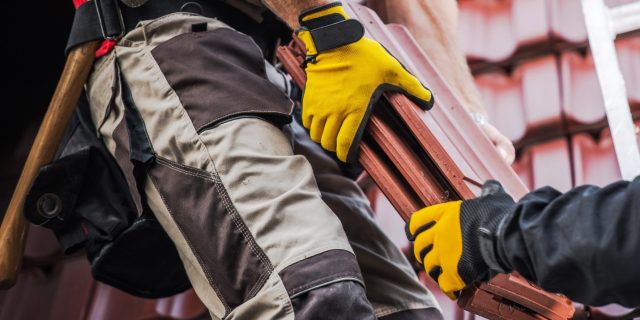
Rainstorms with heavy, torrential downpours are one of history’s most spectacular exhibitions. We feel fresh hearing the rain and experiencing the electric glint in the wind. These disasters can be thrilling and wonderful, but they can also damage our buildings, particularly shingles.
Water is the main killer of your ceiling. Every roof is vulnerable to heavy rain. Therefore, households should be vigilant in their roofing upkeep. The roof of your house is the first bulwark against the environment. Although you can’t change the weather, you may take precautions to protect your roof from excessive rain and flood damage.
Rainwater can cause mold, rot, and gaps in your apartment’s sturdiness, so it’s critical to remain on top of any concerns to keep humidity under control. A few crucial methods below will make your roof impervious to rain.
Keep Gutters And Downspouts Clean
There’s no denying that wiping your gutters is a chore, but it’s necessary. Gutters are essential to your home’s water defense system and must be cleaned regularly. Heavy torrential rain can dump leaves, wood chips, sticks, and needles into your gutters. This debris can create obstructions, preventing your gutter system from effectively channeling water away from your property.
Water can flow smoothly away from the edges of your gutters, and downspouts are clean. If your gutters become clogged with leaves and debris, they may spill, causing harm. Water will not pool at the base or run down the side of your house if your gutters are wiped in the fall and spring. Annually examine your roof for leaks and make necessary repairs.
Shingle inspection
A shingle is a clean edge of building material with a wider end than the other. Shingles are commonly used as roof coverings and siding on residential structures, and they come in various materials, including hardwood, bitumen, and granite.
They are connected in contiguous rows or divisions. The metal strips at the border and boundary of the roof, known as flashing, protect from roof rain injury. It’s too easy to overlook the roof until there’s an issue.
Keep flashing in good repair
Here the question arises what is flashing? Flashing is the wire mesh strips surrounding items that protrude through your roofs, such as fireplaces, skylights, and exhaust fans. When flashing is functioning properly, water is discharged away from these things, preventing leaks.
If you don’t take the right measures, every area where joints and gaps break the roof can produce a leak. It’s critical to employ the best roofing company to inspect your covering for symptoms of wear and fix problems before severe problems arise.
Check and maintain vents
Your building is ventilated to keep incredibly high heat levels from ramping up in your roof during warmer days. Vents are a vital security measure in every structure, but they can also create areas sensitive to water entry during torrential rainfall. Vent guards should be installed on your vents to keep water out of your home.
Birds’ nests, baseballs, bushes, and rubbish can clog your vents, resulting in water damage and other issues. Debris removal and the placement of guards might help you sleep better at night, knowing that your vents are safe. You’ll need to employ professionals to inspect your vents to ensure they’re properly placed and secured.
Ensure proper draining
Rainwater can drain effectively if your residence has the appropriate pitch, reducing roof rain impact. Waterproof your house and ensure water is drawn away from the foundation. It’s time to obtain an assessment if you feel you have a drainage issue. Paying for an examination now will help you avoid costly repairs later.
Have a professional inspect your roof
Evaluating your roof by a roofing contractor with expertise will ensure your home is safe from intense rainfall. We strongly advise outsourcing your roof’s maintenance to a licensed roofing contractor due to the importance of having these susceptible roofing components protected.
A professional business has the knowledge, equipment, and experience to ensure that problems are mainly relied on and that your roof is set for the next time the weather turns bad.
Conclusion
It is always preferable to address any potential blind links or problem areas before the onset of water damage. The measures mentioned above assist in making your roof impervious to rain and preparing your roof for strong winds.
So this way, you can observe the rain from inside while remaining calm. Preventative maintenance can go a long way toward avoiding more serious issues.













